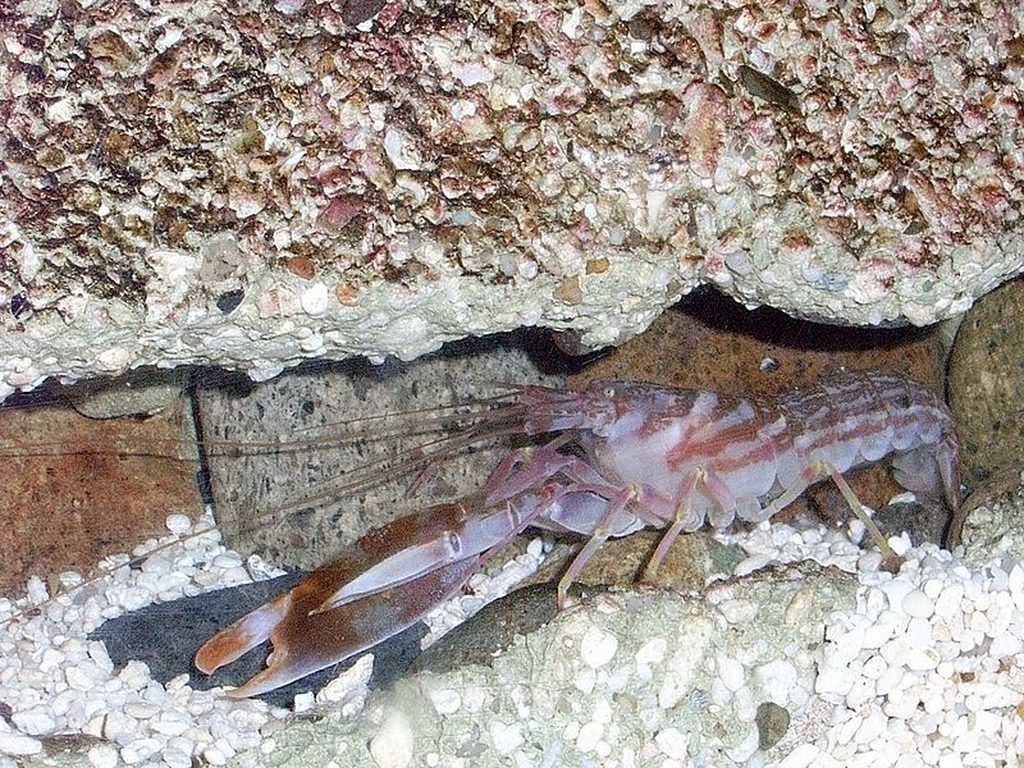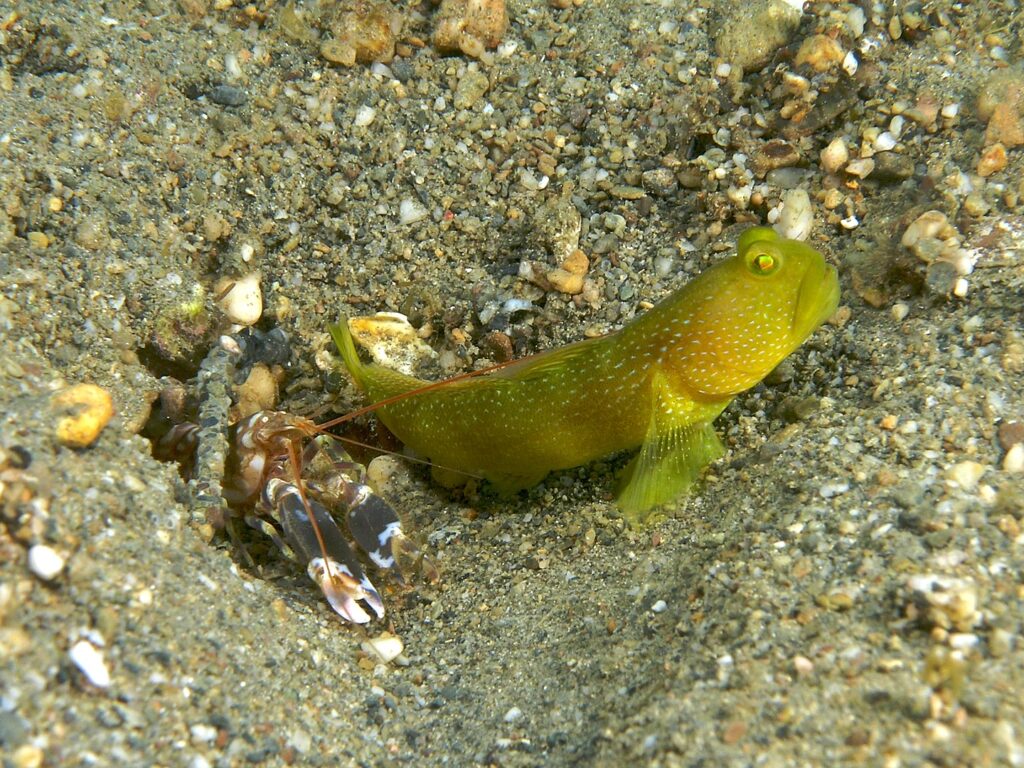Pistol shrimp
Alpheidae sp.

A very loud sound produced by a claw
Pistol shrimps are a family of shrimps consisting of about 600 species. Common to all pistol shrimps is that one claw is greatly enlarged, and can make a pistol shot-like sound of up to 218 decibels. These are sound levels that rival those of whales, which are the loudest animals in the world. When the pistol shrimp snaps its claw together, it creates a shock wave so powerful that it can paralyse fish and other prey.

Photo: Daiju-Azuma-CC-BY-SA
Builds nests for protective fish
The pistol shrimp has a very hard shell, long antennae on its head and 10 legs. If it loses its large claw, the smaller one grows into a large claw. If it loses its small claw, it grows a new one. Pistol shrimps have very poor eyesight, with small eyes covered by the dorsal shield.
Pistol shrimps are bottom-dwelling and dig burrows in the sand, preferably under rocks or coral reefs. Most species of pistol shrimp live in symbiosis with fish of the Gobiidae family, or gobies. Since the shrimp has such poor eyesight, the fish stands guard while the shrimp digs out the burrow with its practical claws. Both the fish and the shrimp benefit from the cooperation.

Photo: Nhobgood-Nick-CC-BY-SA
May have two sexes
Some species of pistol shrimp are hermaphrodites – that is, the same individual can be both male and female, while other species of pistol shrimp have both distinct males and females. A pair of pistol shrimp can stay together for life, and even hermaphroditic species form pairs and develop into a male and a female within the pair. Pistol shrimps lay their eggs in chambers in the burrows they dig.
Distribution worldwide
Eastern Pacific in coral reefs around the equator.

Threat based on the Red List

Trade regulations
CITES: Not listed.